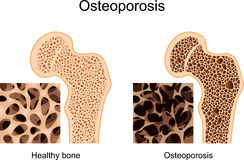Medical definitions Osteopenia
Before we consider the Medical definitions Osteopenia, let's review the 'popular definitions'.
When bones get thin, when they lose density and become a bit porous, they are called Osteopenic bones and the person is said to have Osteopenia. When the bone thins so much that it becomes quite porous, the bones are said to be Osteoporic and person is said to have Osteoporosis ['Osteo'-bone; 'porosis' - porous]. Those are the 'popular definitions'.

Medical definitions Osteopenia are related to Dexa Scan results
A Dexa scan ( ‘Dual Energy X-ray Absorptiometry’) is the most common means of measuring bone density. It is very accurate, more accurate than other forms of bone density measurement and it is relatively inexpensive.
When someone's dexa scan results are reported, they show 3 important numbers:
- There is the actual density of bone. This is reported as the number of grams per centimeter of bone.
- Then comes the comparison of your bone density with that of persons in their 'peak bone mass years'. This comparison is given as a T-score.
- Third, there is a comparison of your bone density with people in your own age group. This is called your Z score.
The medical definitions Osteopenia uses the T-score
Remember that T score compares your bone density with persons in their peak bone mass years.
How Osteopenia is defined - the real medical definition:
- If a T score is between +1 and -1, bone density is said to be normal.
- But if a T score is between -1 and -2.5, bone density is said to be Osteopenic.
- Below -2.5 is defined as Osteoporosis.
To summarize: The medical definitions of Osteopenia are derived from Dexa Scan results. Any one with a T score between -1 and - 2.5 is said to be Osteopenic. If the dexa scan results is lower than -2.5 the person is said to have Osteoporosis (porous bones).
Clearly it is better to have Osteopenia than to have Osteoporosis. But it is better yet, to have dexa scan results that show your bones are in the Normal range of bone density.
Improving your bone density
Clearly it is better to have Osteopenia than to have Osteoporosis. But it is better yet, to have dexa scan results that show your bones are in the Normal range of bone density.
Remember that others with Osteopenic or Osteoporic bone have reversed their bone loss. Why not you? Now that you understand the medical definitions Osteopenia, you will want to know how to increase your own bone density..
There are hundreds of pages to this web site. Each contains articles about this condition and how to strengthen I suggest that you plan to read a few articles each week. Take your time. Study. Understand. The start acting. Of course you will want to discuss your plans with your health care provider.
Where to begin
The first thing you want to do is find out WHY you have Osteopenia or Osteoporosis. If you know the reasons why your bones have grown weak, then you can take steps related to your specific causes. So I suggest you begin by reading Causes of Osteopenia, Osteoporosis
After you have made a list of ALL your causes, then you will want to read Natural ways to reverse bone loss.
I wish you all the best as you work to increase your bone density. Remember finding all your causes is the key. You can reverse bone loss. Others have. You can do it too.
